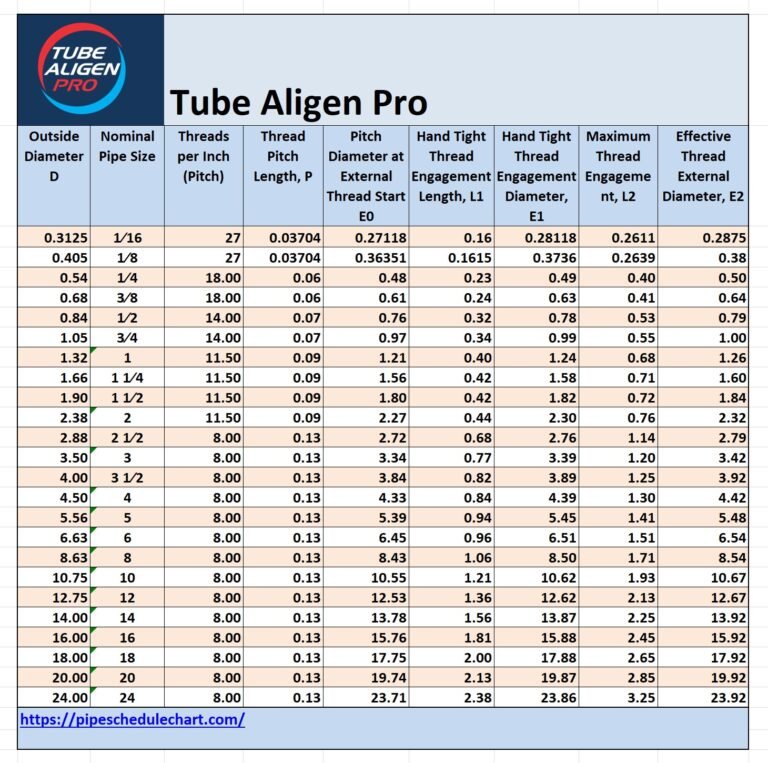A Comprehensive Guide Metric Bolt Sizes
Introduction to Metric Thread Charts
A Metric thread dimensions chart is an essential reference tool for engineers, machinists, and DIY enthusiasts working with fasteners like screws, bolts, and nuts. This standardized chart provides critical dimensions for ISO metric screw threads, ensuring compatibility and precision in manufacturing and assembly.
With globalization driving the adoption of the metric system, understanding how to interpret these charts is vital for industries ranging from automotive to aerospace.

What Are Metric Threads?
Metric bolt dimensions, standardized under ISO 68-1 and ISO 261, are the most widely used thread type globally. Characterized by their 60-degree symmetrical V-shape, these threads are defined by two primary measurements: major diameter (outer thread width) and pitch (distance between adjacent threads). Unlike imperial threads, metric variants use millimeters, simplifying calculations in metric-based industries.
Matric Thread Chart
| Simple Thread Designation | Thread Designation | Pitch (MM) | Basic Major Diameter (External Threads) | Basic Minor Diameter (Internal Threads) |
|---|---|---|---|---|
| M1 | M1x0.25 | 0.25 | 0.982 | 0.729 |
| M2 | M2x0.4 | 0.4 | 1.981 | 1.567 |
| M3 | M3x0.5 | 0.5 | 2.980 | 2.459 |
| M4 | M4x0.7 | 0.7 | 3.978 | 3.242 |
| M5 | M5x0.8 | 0.8 | 4.976 | 4.134 |
| M6 | M6x1 | 1 | 5.974 | 4.917 |
| M7 | M7x1 | 1 | 6.974 | 5.917 |
| M8 | M8x1.25 | 1.25 | 7.972 | 6.647 |
| M9 | M9x1.25 | 1.25 | 8.972 | 7.647 |
| M10 | M10x1.5 | 1.5 | 9.968 | 8.376 |
| M12 | M12x1.75 | 1.75 | 11.970 | 10.106 |
| M14 | M14x2 | 2 | 13.960 | 11.835 |
| M16 | M16x2 | 2 | 15.960 | 13.835 |
| M18 | M18x2.5 | 2.5 | 17.960 | 15.294 |
| M20 | M20x2.5 | 2.5 | 19.960 | 17.294 |
| M22 | M22x2.5 | 2.5 | 21.960 | 19.294 |
| M24 | M24x3 | 3 | 23.950 | 20.752 |
| M27 | M27x3 | 3 | 26.950 | 23.752 |
| M30 | M30x3.5 | 3.5 | 29.950 | 26.211 |
| M33 | M33x3.5 | 3.5 | 32.970 | 29.211 |
| M36 | M36x4 | 4 | 35.940 | 31.670 |
| M39 | M39x4 | 4 | 38.940 | 34.670 |
| M42 | M42x4.5 | 4.5 | 41.940 | 37.129 |
| M45 | M45x4.5 | 4.5 | 44.940 | 40.129 |
| M48 | M48x5 | 5 | 47.930 | 42.587 |
| M52 | M52x5 | 5 | 51.930 | 46.587 |
| M56 | M56x5.5 | 5.5 | 55.930 | 50.046 |
Key Features of ISO Metric Screw Threads
- Major Diameter (D): The largest diameter of the thread.
- Pitch (P): Measured in millimeters between thread crests.
- Tolerance Grades: Indicates thread fit precision (e.g., 6g for external threads).
Components of a Metric Thread Chart
A metric thread chart organizes data into columns and rows, detailing specifications for various thread sizes. Below are the core elements:
1. Major Diameter (D)
The major diameter is the outermost measurement of the thread, critical for determining bolt-hole sizes. For example, an M6 bolt has a major diameter of 6 mm.
2. Pitch (P)
Pitch defines the thread’s coarseness or fineness. A smaller pitch (e.g., M6x1) means tighter threads, while a larger pitch (M6x1.5) offers faster assembly.
3. Tapping Drill Size
This specifies the drill bit diameter required to create a hole before threading. For an M6x1 thread, the tapping drill size is typically 5 mm.
4. Thread Tolerance Grades
Tolerance classes like 6H (internal) or 6g (external) define how tightly threads fit. Tighter tolerances (e.g., 4H) are used in high-precision applications.
How to Read a Metric Thread Chart
Let’s decode a sample entry: M10x1.5-6g.
- M10: Major diameter = 10 mm.
- 1.5: Pitch = 1.5 mm between threads.
- 6g: Tolerance grade for external threads.
Step-by-Step Interpretation
- Identify the thread designation (e.g., M8, M12).
- Locate the pitch and tolerance in adjacent columns.
- Cross-reference tapping drill sizes for machining.
Applications of Metric Thread Charts
From automotive engines to aerospace components, metric threads ensure global compatibility. Common uses include:
- Machinery Manufacturing: Standardizing bolt sizes for assembly lines.
- Construction: Structural fasteners in metric-based countries.
- Consumer Electronics: Precision threads in devices like smartphones.
Advantages of Using Metric Threads
- Global Standardization: Simplifies international trade and repair.
- Simplified Calculations: Metric units align with CAD software and engineering designs.
- Wide Availability: Charts and tools are accessible across industries.
ISO Standards and Thread Fit Classifications
Adherence to ISO 965-1 ensures consistent thread fits:
- Fine vs. Coarse Threads: Fine threads (e.g., M6x0.75) offer higher tensile strength.
- Fit Types: Loose (e.g., 7g/7H) vs. tight (4g/4H) for varying applications.
Tips for Selecting the Right Metric Thread Tables
- Match the thread to the application’s load and stress requirements.
- Use finer pitches for vibration resistance.
- Verify tolerance grades to avoid assembly issues.
Conclusion
Mastering the metric thread Mastering the metric thread chart is crucial for precision in engineering and manufacturing. Professionals can ensure reliable, standardized outcomes by understanding its components—from primary diameter to thread tolerance grades. Always consult the chart to select the optimal thread for your project.




